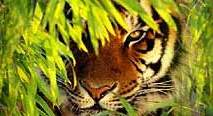India has 5% less sun than 20 years ago due to smog.
However, we will face fewer problems
with global warming than other
nations because of the smog.
-- Times of India, 16 Nov 2007
So many contrasts, so many ironies, so many odd things side by side. We were stopped in the city street yesterday to wait for a herd of cows and few goats to make their way through the rickshaws and motorcycles, when a car pulled up next to us full of sheep. Because the steering wheel is on the right side, for a minute I thought the sheep was driving. What's really odd is that here in India I didn't even consider it unusual to see a sheep driving.
This is all very eye-opening. The streets overflow with litter. The smell from the use of the sidewalks as urinals is overwhelming. The incredible smog that blankets this country is shrouding it's natural beauty. And killing it's inhabitants. In that same article quoted above, they also stated that India now has a higher rate of respiratory problems. Then, like above, they immediately countered that statement with "However, we will face fewer problems with other health issues due to the protection from global warming."
The smog here is protecting them from the dangers of global warming? A false positive.
But just as they counter their own truths with comfortable fabrications, I've realized already how easily I've fallen into the habit as well. I think of the United States as so advanced. And we are certainly in terms of industry, commerce, and (thank God) sanitation systems. We assume our ways are best, but our success has made us complacent and wasteful. I know I'm not the first person to state this.
In the United States, we would never so casually drop our trash by the side of the road, but we don't hesitate to designate more and more area to landfills. We have the cleanest drinking water in the world, yet we insist on buying single-use bottles of water for simple convenience. We tear down good housing just to build something that suits our fancy in the same place.
The people here are ingenious in their frugal use of everything around them. To them, every item has a purpose. And usually the purpose is bare subsistence. They collect seeds from flowers in the public gardens and sell them. They create houses out of found materials that I would never have dreamed of. They make fuel from dung, curtains from straw, and bowls from the clay dirt found by the roadside. Their broad resourcefulness is staggering.
Through my lens of preconceptions, this resourcefulness has created an environment generous with expansive disparity and wild contrast. Some of the more notable images are women in beautiful gauzy sarees carrying bowls of cow manure on their heads; the longevity of ancient marble structures to commemorate the dead surrounded by temporary shanties to house the living; a cow standing in front of McDonalds in Delhi. (It begs the question: What are they serving in those burgers if cows are sacred?)
The thing I'm learning so far is that nothing is what it first appears to be. My expectation that these are poor people simply because they live on the streets is not true. I've seen some of the happiest faces here and they're not in the palaces. They're on the crowded streets. They're in the small villages crammed full of as many people as Chicago. They're in the circles of families squatting around fires by the roadside, eating their evening meals with their fingers, laughing as they enjoy each other's company. These are a very handsome people who surround themselves with many things of color and beauty.
False positives? No. There are many things here that are truly very positive. I think I packed the wrong expectations when I prepared for this trip. I think I'll drop my false negatives on the side of the road as I leave Jaipur today.
